What Muscles Does Deadlift Work?
Author:
Reviewed by:
(21 years of Oly Lifting experience)
Unlock your full potential by engaging with our experts and community! Have questions about your fitness journey or looking for expert advice on weightlifting techniques? Don’t hesitate — leave a comment below and Sergii Putsov will provide a personalized answer and insights to help you reach your goals.
Torokhtiy is reader-supported. Some links are affiliate links, and we may earn a commission at no extra cost to you. See our disclosure page for details.
Deadlifts are known as one of the big three lifts for a reason. They work multiple muscle groups and promote correct functional movement patterns that translate into daily life. So, what muscles do deadlifts work? What variations can you perform? Read on to learn more!
What Muscles Do Deadlifts Work? Deadlifts work three major muscle groups. These are your hamstrings, glutes, and back muscles, collectively known as your posterior chain. Deadlift target muscles also include your quads depending on how low your starting position is.
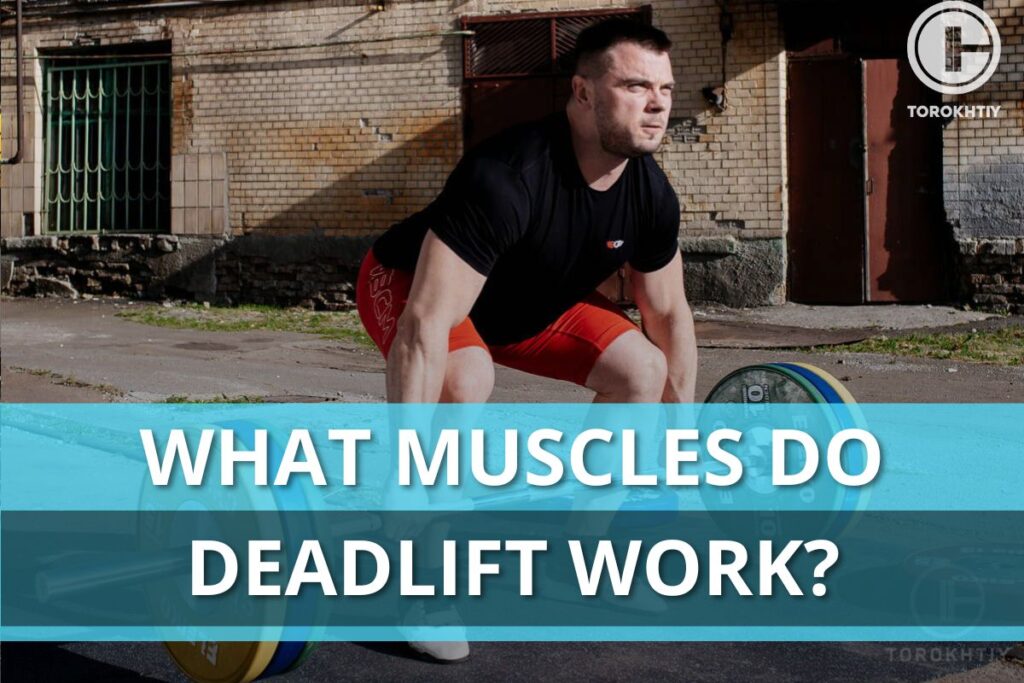
What Muscles are Used in a Deadlift?
Deadlifts are classed as a compound movement meaning they work multiple muscle groups when performed correctly. They can be done using several variations to target different muscles and improve strength, power, and functional movement patterns. But, what do deadlifts target?
The standard deadlift is a hip-dominant movement that works your posterior chain. This consists of your glutes, hamstrings, calves, latissimus dorsi, erector spinae, and posterior deltoid muscles. Several synergistic and stabilizer muscles are also involved. Let’s take a look at these muscles in more detail:
Gluteus Maximus
Also known as the ‘glutes, is a large group of three muscles that make up the buttocks area. They are one of the prime movers involved in the deadlift movement. As it’s primarily a hip extension, the glutes primarily function to help you stand tall when pulling the bar from the ground.
The glutes are active throughout the whole movement, but are at peak activation when the barbell passes the knees.
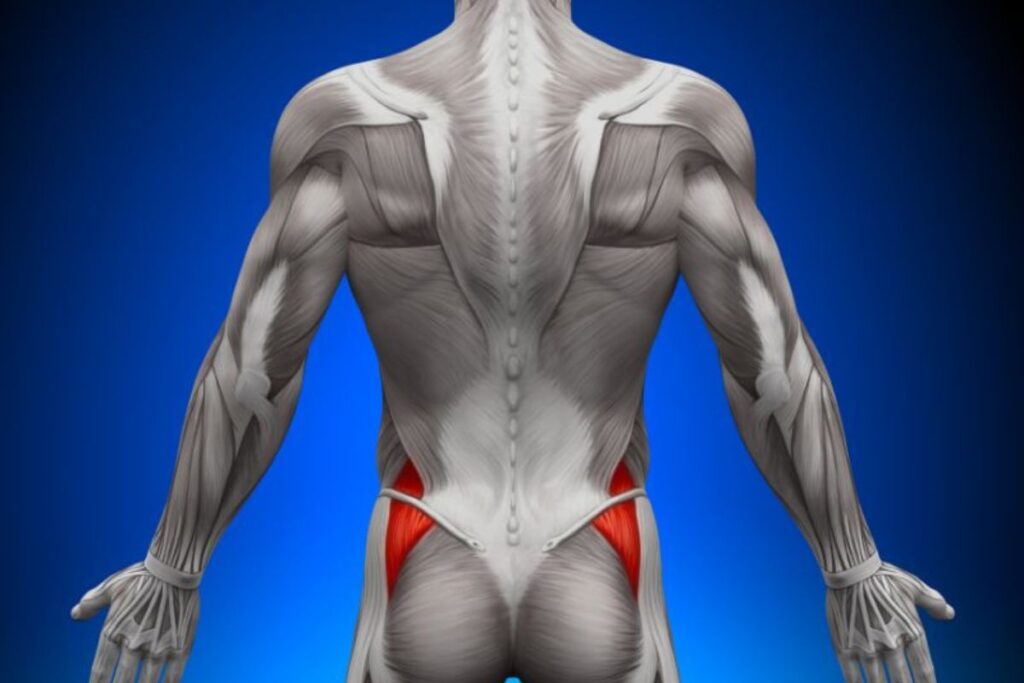
Hamstrings
The hamstrings comprise three individual muscles at the back of each leg. These are the bicep femoris, semimembranosus, and semitendinosus. They sit above the calves and below the glute muscles.
In a deadlift movement, the hamstrings work alongside your glute muscles to keep your torso upright throughout the lift. They are active throughout the whole movement, with a stretch felt during the setup portion when you’re about to pull the bar off the floor.
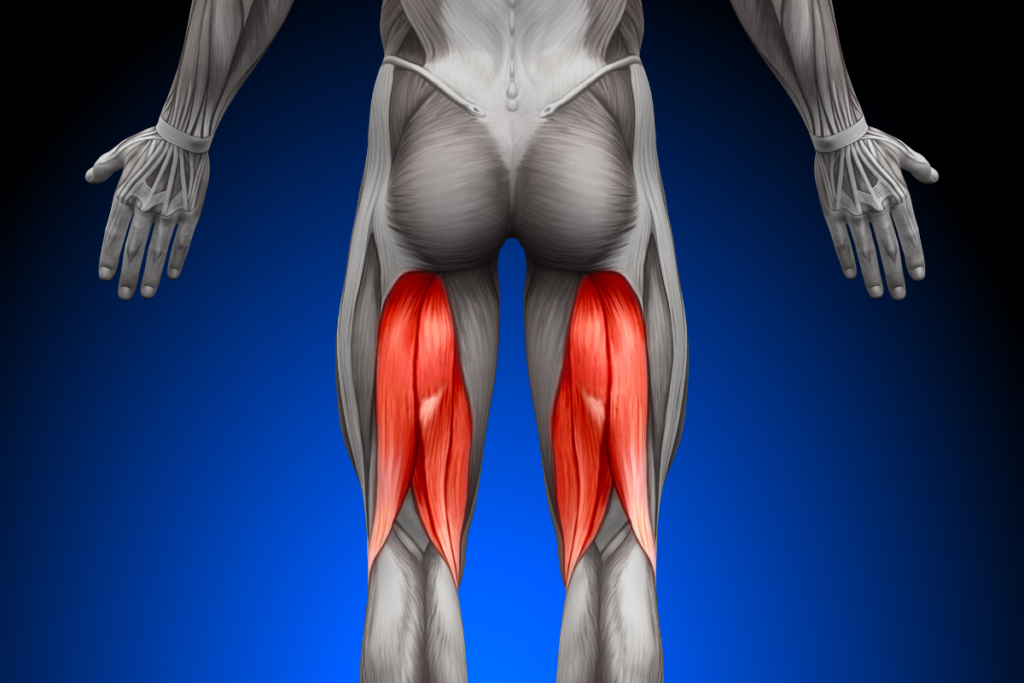
Quadriceps
Also known as the ‘quads’, the quadriceps consist of four muscles that are situated at the front of your thigh. They contain the largest muscle mass out of any muscle group and consist of the rectus femoris, vastus lateralis, vastus medialis, and the vastus intermedius.
While they play a more limited role during the deadlift movement, they place a crucial role at the start. As you start to pull, your quads work to get the barbell off the ground. As you start to move to an upright position, your quad engagement decreases as your posterior chain starts to take over.
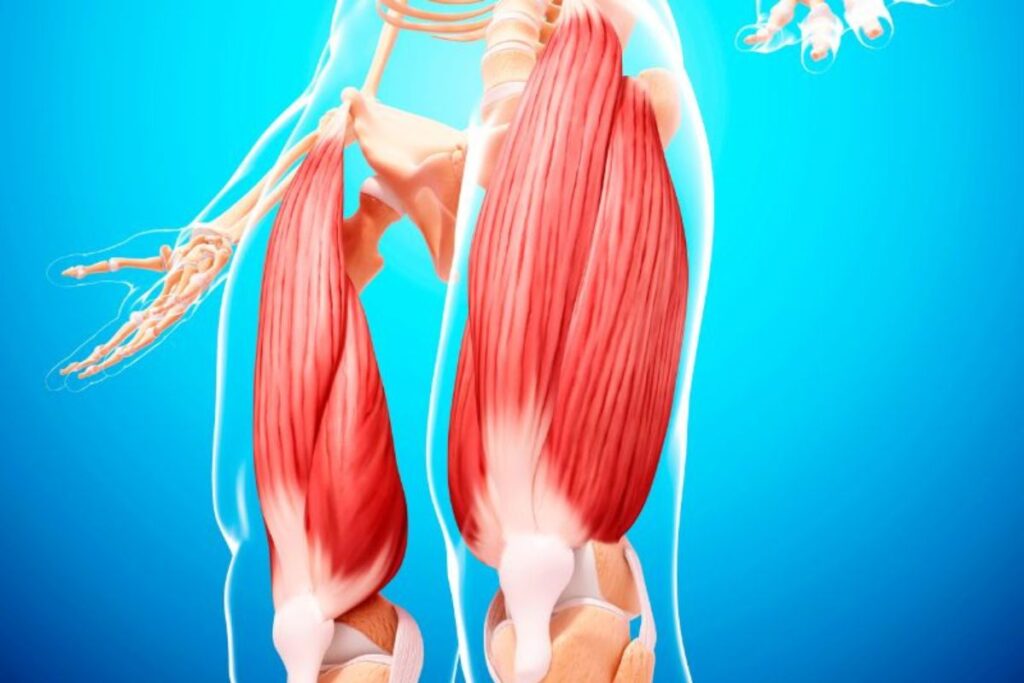
Latissimus Dorsi
Also known as the ‘lats’, the latissimus dorsi muscles consist of two large, triangular-shaped muscles on either side of your spine. Your lats work with your other back muscles including your trapezius and erector spinae to keep your torso stable whilst lifting the bar off the floor.
To pull big numbers off the floor, your shoulder girdle needs to be kept stable throughout the whole movement. Contracting your lats throughout the deadlift allows you to keep a tighter body position and load more plates onto the bar.
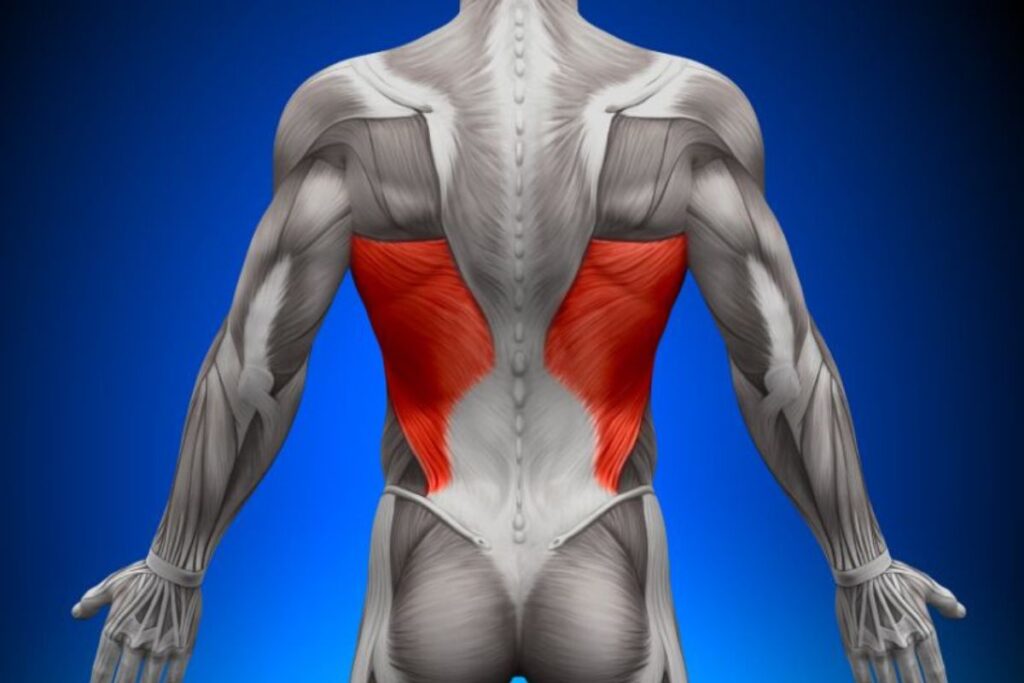
Erector Spinae
Your erector spinae muscles are more commonly known as your lower back. Whilst your lats and mid back work to keep an upright body position, your lower back works to protect your spine.
They do this by contracting to keep everything properly aligned during the movement. Alongside a better deadlift, a strong lower back translates to better functional movement patterns in daily life such as picking things up off the floor.
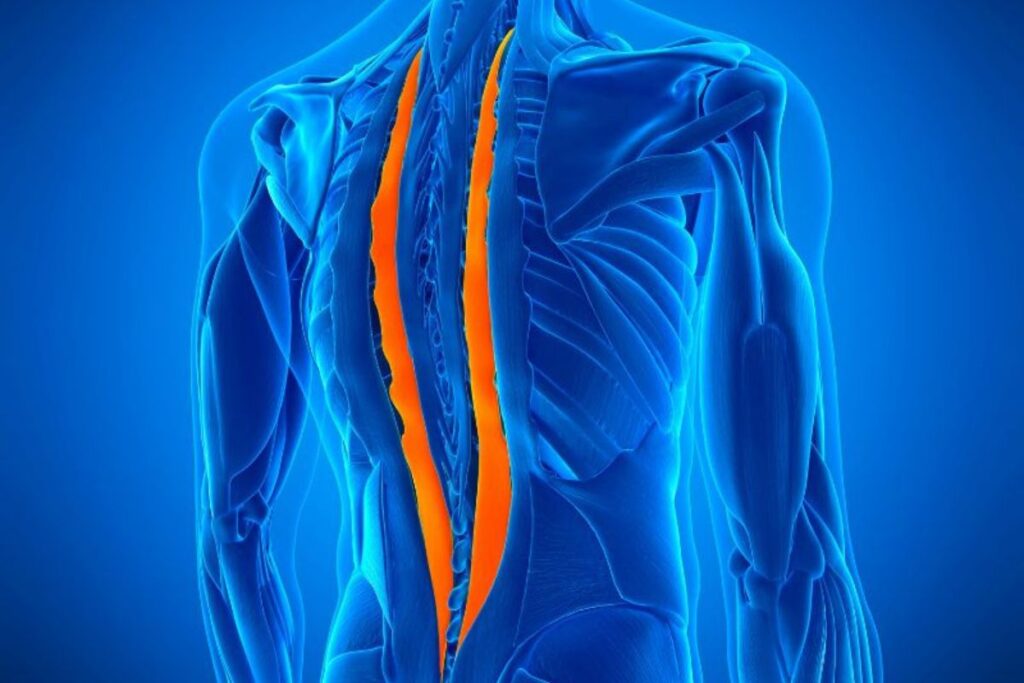
Trapezius
Your trapezius is a large triangular-shaped muscle that extends from the bottom of your skull to your mid-back region. The traps function primarily by stabilizing your shoulder muscles as they work against the weight of the barbell.
Keeping a stable shoulder position helps to maintain a ‘neutral back’ position to perform a deadlift correctly and safely.
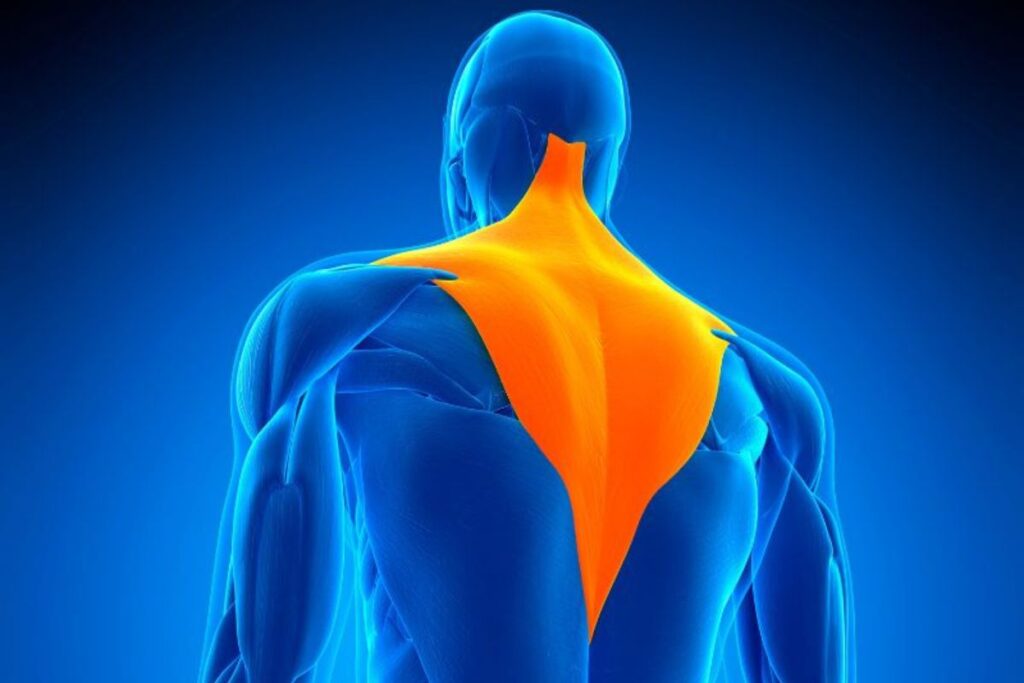
Synergist Muscles
Alongside the prime movers, smaller synergist muscles provide much-needed support at different amounts during different portions of the deadlift.
Your abdominal muscles create intra-abdominal pressure to reduce the amount of compression on the spine and limit the chance of lower back injuries. Your rhomboid muscles help to stabilize your shoulders by working alongside your lat muscles when pulling. Your forearms contract to keep a firm grip on the barbell throughout the whole movement
Whilst each of these stabilizer muscles may not be classed as prime movers, they are equally as important to perform the deadlift movement successfully.
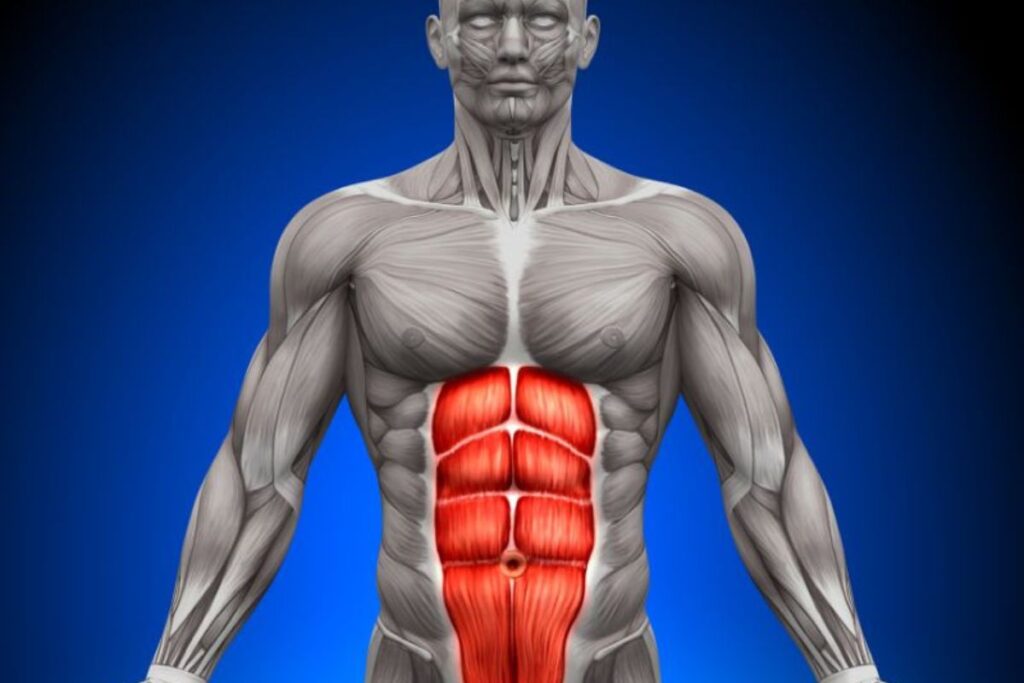
Deadlift Variations
Deadlifts can be performed using different movement patterns that allow you to target other muscle groups. Here are some of the possible variations:
Romanian Deadlifts
Romanian deadlifts use a similar movement pattern to the traditional version but differ in the degree of knee flexion used when lifting.
Instead of bending, the knees are kept straight allowing the body to bend primarily at the hips. This primarily utilizes the top half of the standard deadlift movement.
If you’re wondering what muscles do Romanian deadlifts work, they primarily target the hamstrings. Your glute muscles and forearms are also involved to perform a hip hinge and keep the barbell securely gripped.
Sumo Deadlifts
A sumo deadlift is more commonly used by powerlifters to maximize the amount of weight lifted off the floor. The main difference when comparing it to a standard deadlift is the placement of your hands and feet during the initial setup.
To perform a sumo deadlift correctly, assume a much wider stance with your feet slightly flared out and shins perpendicular to the floor. Your hands should be shoulder-width apart meaning they are in a narrower position compared to your legs.
Sumo deadlifts work many of the same muscles as conventional ones which include your hamstrings, glutes, lower back, and quads. Due to the wider leg position, the glutes are targeted more.
Block Deadlifts
Block deadlifts, also known as rack pulls, are designed to work on the top portion of the deadlift. There may be specific areas you want to improve such as the lift portion just past the knees or lockout.
Block deadlifts can help lifters who struggle to maintain back tension as you’re able to fully engage your lats before lifting. To setup up correctly, use an elevated surface for the barbell and perform the same technique as you would with a normal deadlift.
Deficit Deadlifts
Deadlifting from a raised body position is known as performing a deficit deadlift. Common gym equipment that can be used includes weight plates and lifting surfaces.
Deficit deadlifts help to address a weak leg drive and too much hip movement.
One Arm Dumbbell Deadlifts
These involve holding a dumbbell in either hand whilst leaning forward and extending the opposite leg backward. They work the same muscle groups as normal deadlifts alongside balance, stability, and core strength.
Cable Deadlifts
These are performed the same as Romanian stiff leg deadlifts, but use a pulley system instead of a barbell or dumbbell. Due to the fixed resistance, they are great to do if you lack balance and coordination.
What Other Exercises Work the Same Muscle Groups?
If you’re not a huge fan of deadlifts or fancy a different exercise, the following exercises are suitable deadlift alternatives:
Kettlebell Swings
Classed as a full-body exercise, kettlebell swings target the glutes, hamstrings, spinal erectors, and lats. They are also a great cardio-building exercise as you need to swing a weighted kettlebell between your legs before powerfully extending up.
Hip Thrusts
Hip thrusts are a great alternative to deadlifts due to the amount of weight that can be loaded without injury. If you’re looking to overload your glutes and hips but can’t perform normal deadlifts due to injury then hip thrusts make a great option.
Hip thrusts provide excellent glute stimulation with less fatigue and stress mainly in the lumbar spine region.
To perform them correctly, plant your feet on the ground. Brace your core and extend your hips, driving upwards whilst keeping your back against a bench or other surface.
Follow us!

Free!
Get a 2-week Weightlifting Program as a bonus for the subscription to kickstart your training plan!

Free!
Farmers Carry
These can be done with any kind of weighted object that you’re able to grip, such as a dumbbell, kettlebell, or barbell.
To perform them correctly, lift the weight off the floor using a normal deadlift position and brace your midsection. Walk along for a certain distance or time, take a rest, and repeat.
Farmer’s carries are classed as a full body exercise meaning they work pretty much every main muscle in your body. These include your glutes, quadriceps, hamstrings, lats, and calves. They also help to improve posture and grip strength.
FAQ
Is Deadlifting for Everyone?
In terms of biomechanics, deadlifting may not be for everyone. Genetic factors such as spine thickness and hip structure limit lifters from getting into the correct deadlift position or cause pain when lifting.
This means that even with lots of coaching, you may still not be well-suited for deadlifting. You can however enjoy some of the variations I`ve talked about above.
What Does Deadlifting Every Day Do?
Deadlifting can lead to multiple health and fitness benefits including improvements in strength, power, mobility, and body composition. However, deadlifts are full-body compound exercises, meaning they are taxing on the body’s muscles and central nervous system.
To limit the chance of overtraining, perform them as part of a well-organized gym plan, with periods of rest.
What Muscles Do Sumo Deadlifts Work?
Sumo deadlifts target the quads, glutes, hamstrings, and inner thigh muscles. They also engage the core musculature and erector spinae which both work to keep a ‘tight’ lifting position.
Conclusion
Deadlifts are classed as a compound movement which means they work a large range of muscle groups that mainly comprises our posterior chain. This includes our glutes, hamstrings, quads, erector spinae, lats, trapezius, and core muscles. Other accessory and stabilizer muscles also contribute to performing the correct technique.
Multiple deadlift variations exist which change the degree to which each muscle is activated at different points in the movement. These include sumo, Romanian, and trap bar deadlifts.
Now that I’ve discussed what part of the body deadlifting works, what do you ‘feel’ when you deadlift? What variation do you prefer? Let me know down below!
Also read:
References:
- Kinematic Differences Between the Front and Back Squat and Conventional and Sumo Deadlift // Journals: https://journals.lww.com/nsca-jscr/Fulltext/2019/12000/Kinematic_Differences_Between_the_Front_and_Back.2.aspx
- Lumbar spine loads during the lifting of extremely heavy weights // NCBI: https://pubmed.ncbi.nlm.nih.gov/1758295/
- 10 Deadlift Alternatives to Consider // Healthline: https://www.healthline.com/health/fitness-exercise/deadlift-alternative
- Genes and Athletic Performance: An Update // NCBI: https://pubmed.ncbi.nlm.nih.gov/27287076/
- Muscle fatigue: general understanding and treatment // NCBI: https://www.ncbi.nlm.nih.gov/pmc/articles/PMC5668469/
- Photos by Torokhtiy Media Team; decade3d, Canva.com; sciencephoto, Canva.com.
Why Trust Us?
With over 20 years in Olympic weightlifting, strength training, nutrition coaching, and general fitness our team does its best to provide the audience with ultimate support and meet the needs and requirements of advanced athletes and professional lifters, as well as people who strive to open new opportunities and develop their physical capabilities with us.
By trusting the recommendations of our certified experts in coaching, nutrition, and sports training programming, as well as scientific consultants, and physiotherapists, we provide you with thorough, well-considered, and scientifically proven content. All the information given in the articles concerning workout programming, separate exercises, and athletic performance, in general, is based on verified data.
The product testing process is described in more detail here.
Author: Sergii Putsov
Head of Sport Science, PhD
Best Results: Snatch – 165 kg,
C&J – 200 kg
Sergii Putsov, Ph.D., is a former professional weightlifter and National team member, achieving multiple medals in the 94 kg weight category at national competitions. With a Master’s degree in “Olympic & Professional Sport Training” and a Sport Science Ph.D. from the International Olympic Academy, Greece, Sergii now leads as the Head of Sport Science. He specializes in designing training programs, writing insightful blog articles, providing live commentary at international weightlifting events, and conducting educational seminars worldwide alongside Olympic weightlifting expert Oleksiy Torokhtiy.
Reviewed by: Oleksiy Torokhtiy
Olympic Weightlifting Champion, PhD in Sport Science
Best Results: Snatch – 200 kg,
C&J – 240 kg
Oleksiy Torokhtiy is a professional athlete boasting 20 years of experience in Olympic weightlifting. With multiple European and World titles under his belt, he has showcased his prowess in two Olympic Games (Beijing 2008 and London 2012). Upon concluding his illustrious career, Oleksiy dedicated himself to coaching. By 2022, he had conducted over 200 weightlifting seminars worldwide. He is the visionary behind an international sportswear and accessories brand known for its motto, “Warm Body Cold Mind.” Additionally, he is an esteemed author and the creator of a series of training programs and eBooks.




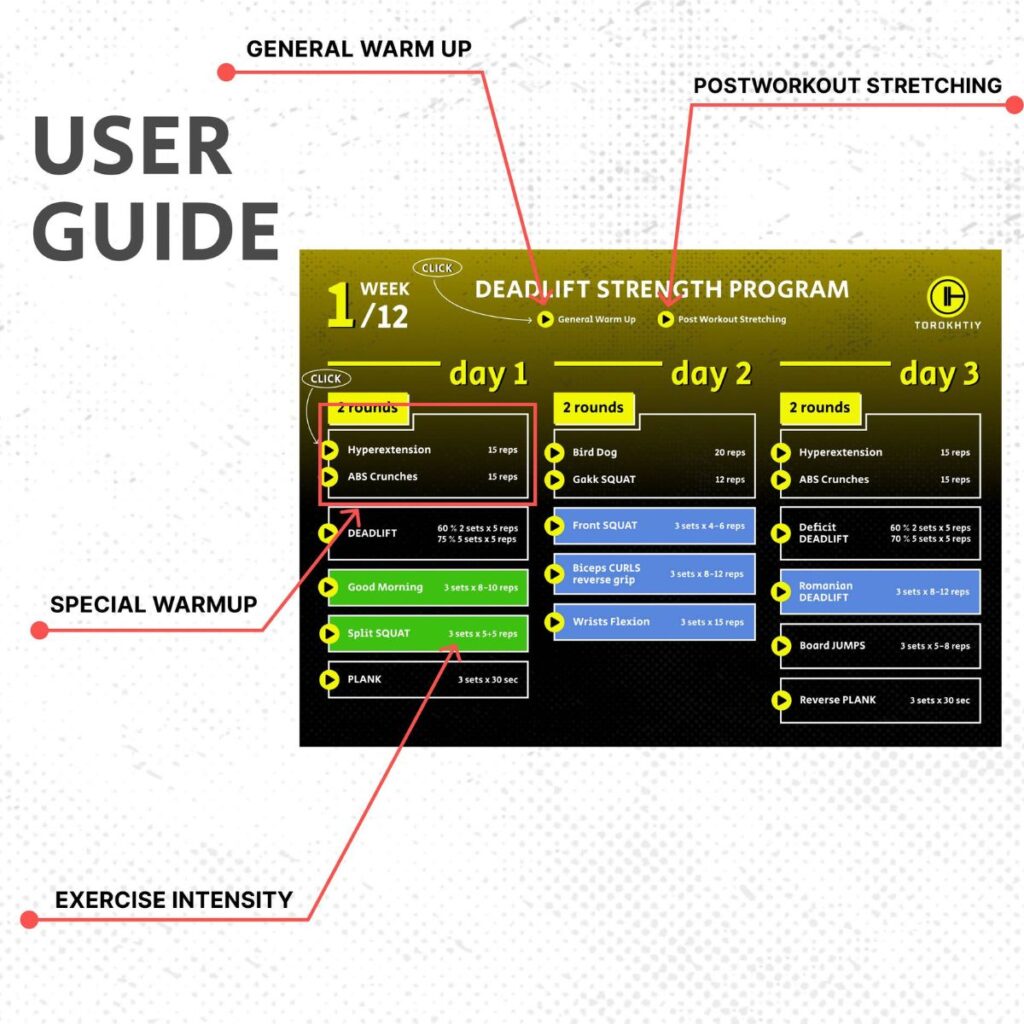
Still have questions after reading our article? Unlock your full potential by engaging with our experts and community! Don’t hesitate — leave a comment below and Sergii Putsov will provide a personalized answer and insights to help you reach your goals.